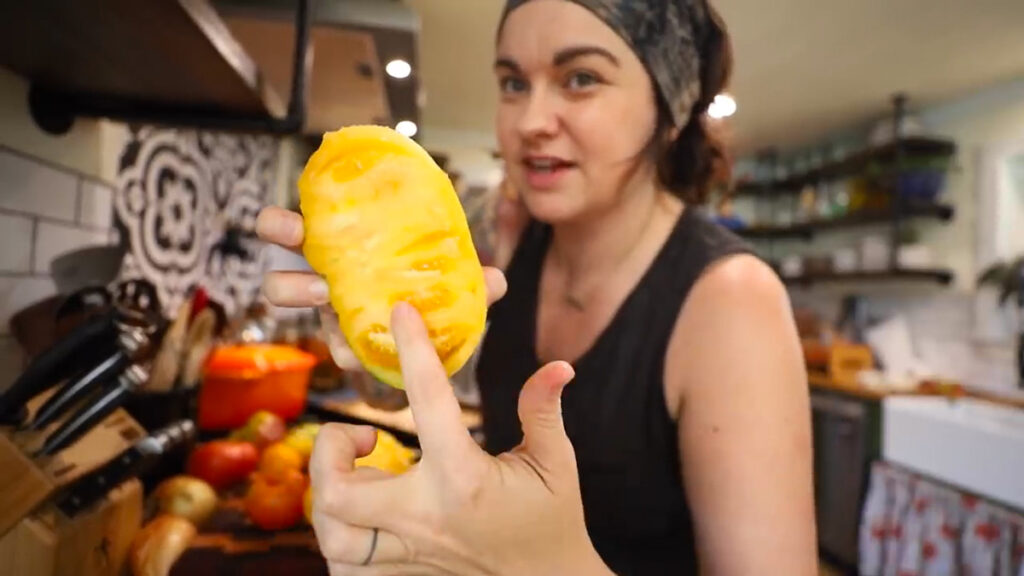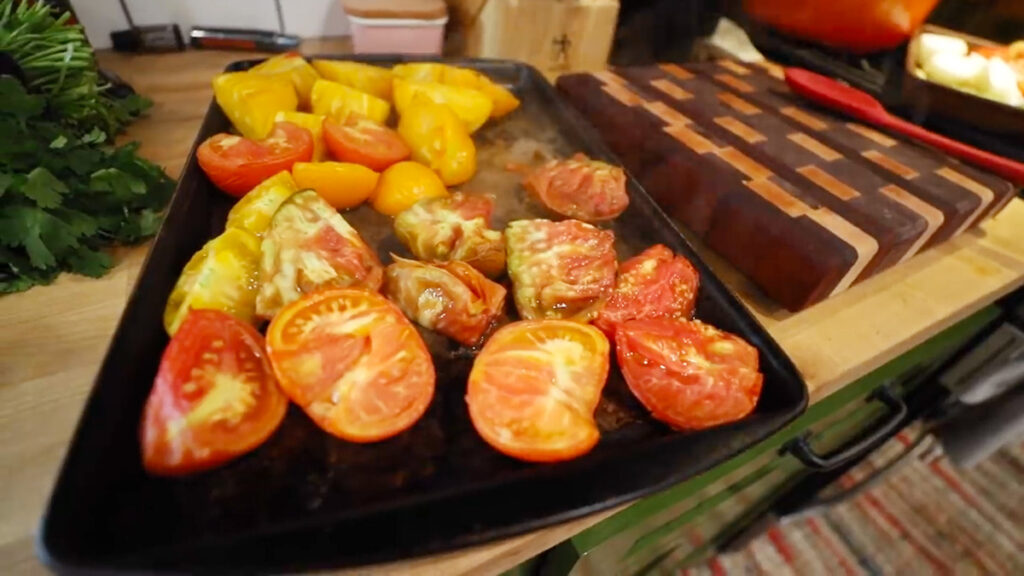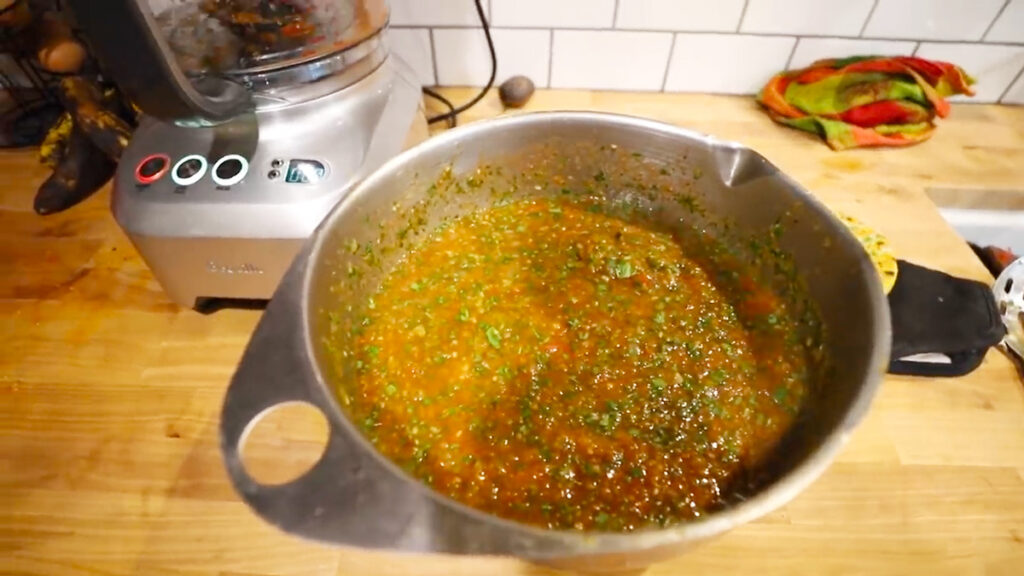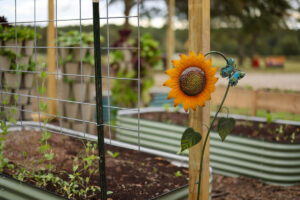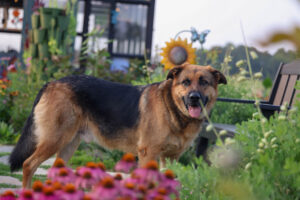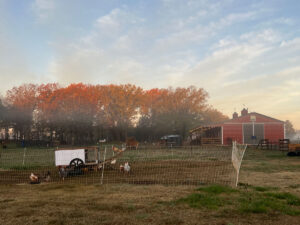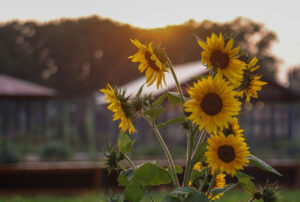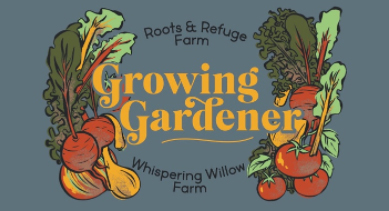Learning how to make this homemade oven-roasted tomato salsa recipe is not as difficult as you might think! Never again will you reach for a can of tomatoes to make a batch of homemade salsa. The intensified flavor of the roasted tomatoes is perfectly complimented with fresh green cilantro for an out-of-this-world combination. The best part is every ingredient in this recipe is adjustable from tangy and mild to hot fire flames.
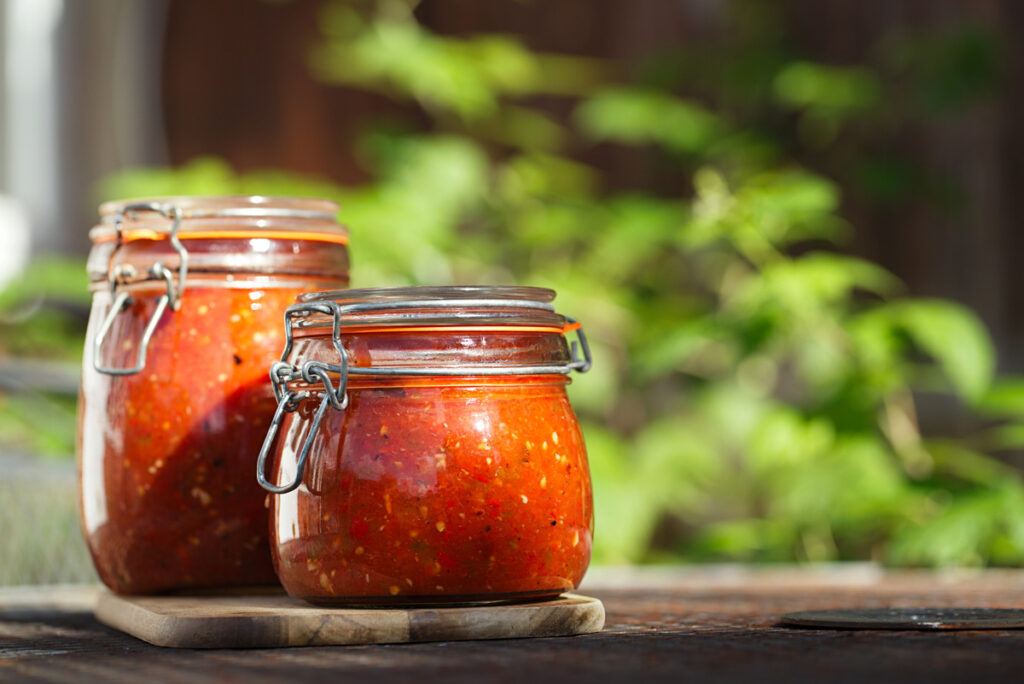
We all know that growing tomatoes is kind of my thing. I've been known to have over 100 varieties of tomatoes growing in my garden all at once! To say I love tomatoes is an understatement.
If you're new to growing tomatoes, be sure to check out my posts on how to plant tomatoes the best way, the difference between determinate and indeterminate tomatoes, as well as proper pruning techniques for tomatoes.
Those will give you a good baseline when it comes to growing your own tomatoes. Because let's face it, one can never have too many tomatoes growing in the garden!
Why I Love Roasted Tomato Salsa
I have learned that the trick to a restaurant-style salsa is to roast the tomatoes, onions, peppers, and garlic. Roasting intensifies the flavors and makes all the difference.
Before I had a garden, I experimented with store-bought tomatoes when making salsa. However, I soon realized that using recipes intended for garden fresh tomatoes would not yield the same results when made with the store-bought variety.
Now that I grow my own tomatoes, I still do the roasting step, and my salsa is exceptionally good. If you have the ability to grow your own tomatoes or source them from a local farmer, I encourage you to do so. They really do make as big of a difference as the roasting does.
I'm going to show you the steps and tools I use to make roasted tomato salsa, but have confidence knowing this recipe is very forgiving. Feel free to make adjustments to fit your own tastes and what is available to you.
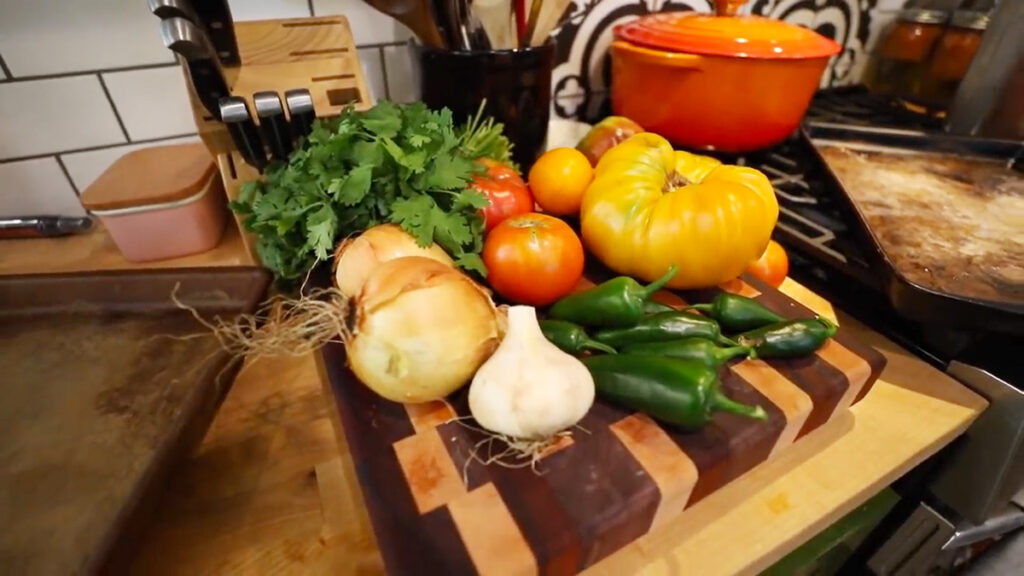
Ingredients
- Tomatoes – I use any kind of fresh tomatoes I grow. Roma tomatoes are meaty and will give you a thicker salsa. You can use red, yellow, or even cherry tomatoes in any combination.
- Jalapeno Peppers – This varies depending on how spicy you like your salsa. I usually roast a few and taste as I'm mixing, adding more if needed. Remove seeds if desiring a milder roasted tomato salsa. If you are really brave, try some Serrano peppers. Chipotle peppers are also an option if you want a smokier flavor.
- Garlic – Garlic powder could be used in a pinch, but fresh cloves of garlic are optimal for this recipe.
- Onions – I like to use sweet onions, but white, yellow, or red onions are also acceptable.
- Fresh Cilantro – Not everyone likes the way cilantro tastes, so this is definitely an ingredient you can adapt to your own taste.
- Honey – Honey's main purpose is not as a sweetener in this recipe. The caramelization of the vegetables may be enough to deepen the flavor, but can be enhanced with the honey.
- Salt – I use coarse ground sea salt in this recipe. If substituting a finer ground salt, you may want to use less.
- Lemon Juice – The juice squeezed out of one lemon should equal about the 1/4 cup needed for this recipe. For those who prefer the cilantro and lime combination, lime juice is also acceptable as a substitute.
- Tortilla Chips – This recipe is so good you could eat it with a spoon, so your call on that one!
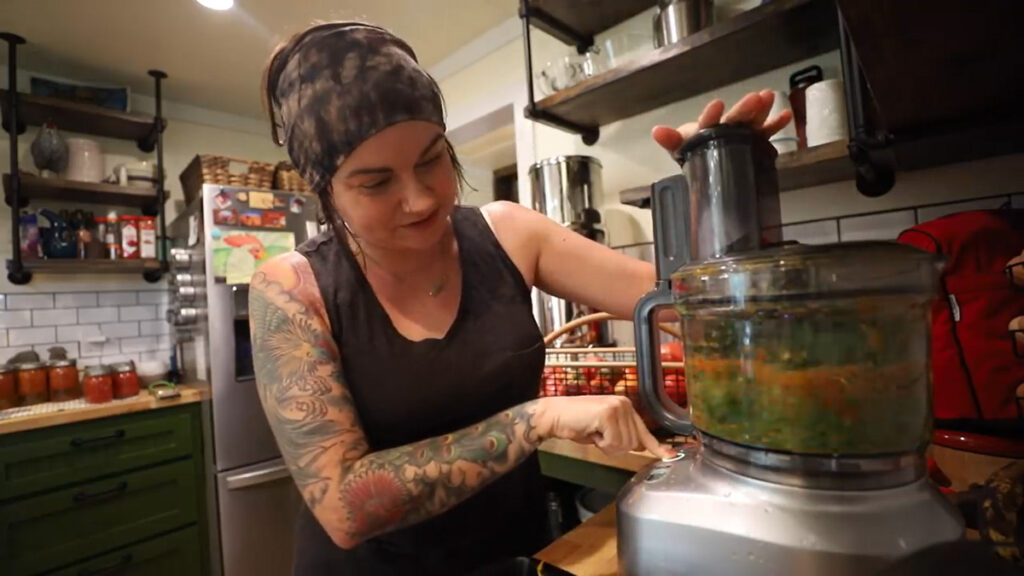
Equipment Needed
- Stoneware Pans – I like to use stoneware. Metal pans can be used but make sure to grease them with some olive oil before roasting. We are caramelizing the vegetables, so there is a tendency for the food to stick to the pans.
- Food Processor or Blender – If using a blender, make sure to pulse on low speed to avoid incorporating too much air and creating a frothy texture.
- Large Bowl – An 8-quart bowl handles this recipe nicely.
- Slotted Spoon – This is for removing the vegetables from your tray after roasting. It allows the juices to stay on the pan instead of watering down your roasted tomato salsa.
Instructions
- Begin by cutting the core out of each tomato and cutting out any brown or ugly spots. The tomatoes do not need to be cut up into tiny bits. Basically, just open the tomato to allow for the juices to run out while roasting.
- Cut the tops off the peppers and halve them. Remove some of the seeds if you wish to cut back on the heat.
- Peel the onions and garlic and slice in half.
- Place all the above on a large flat pan (stoneware or metal) and roast in a 350°F preheated oven for approximately 45 minutes.
- Roast until the tomatoes look slightly caramelized with some brown bits showing, then remove from the oven.
- Using a slotted spoon, place the vegetables in the food processor (or blender) in batches. You don't need to wait for the vegetables to come to room temperature when using a food processor, but you may want to do so if using a blender. The seal of the lid on the blender can trap the steam and create pressure, so use caution!
- Pulse to the consistency you like to eat your salsa and pour into a large bowl as you go.
- When all of the roasted vegetables are blended, place one cup back into the food processor to blend in the cilantro. Pulse the cilantro to desired consistency.
- Fold the cilantro mixture into the salsa mixture in the bowl.
- Into the mixing bowl, add the honey, salt, and lemon juice to the desired flavor, mixing by hand.
- Taste as you go!
- Pour the finished product into jars and store in the refrigerator for 10 -12 days. (See below for additional storage tips.)
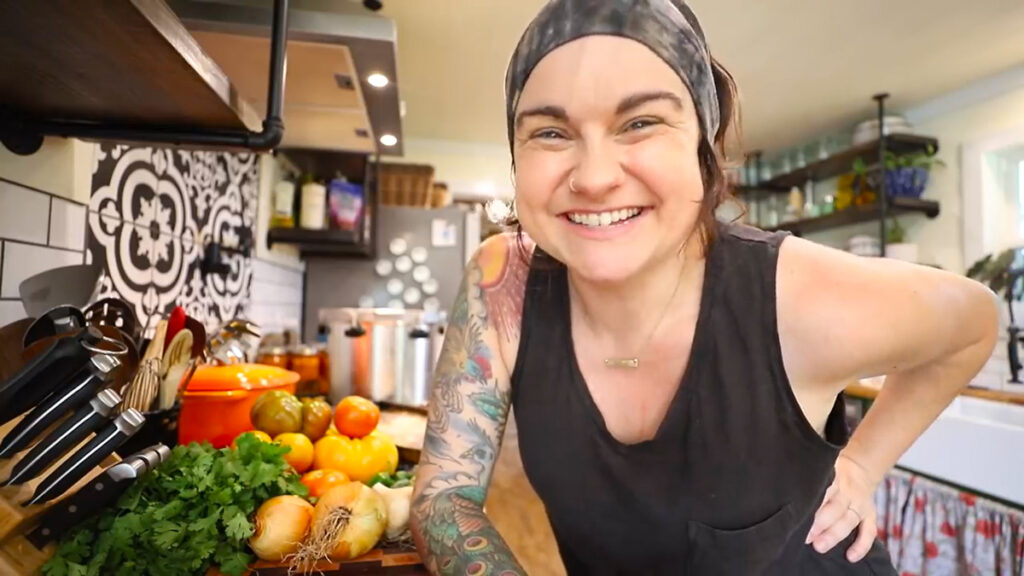
How to Store Roasted Tomato Salsa
This stuff gets eaten so quickly at our house that storage really isn't an issue! It keeps in the fridge for 10 – 12 days. It can also be frozen for a few months. This recipe has not been tested for canning, so I recommend you do your own research on this.
FAQ's
There are a few questions that come up whenever salsa making is discussed. The answers to this can vary greatly, but these are my recommendations.
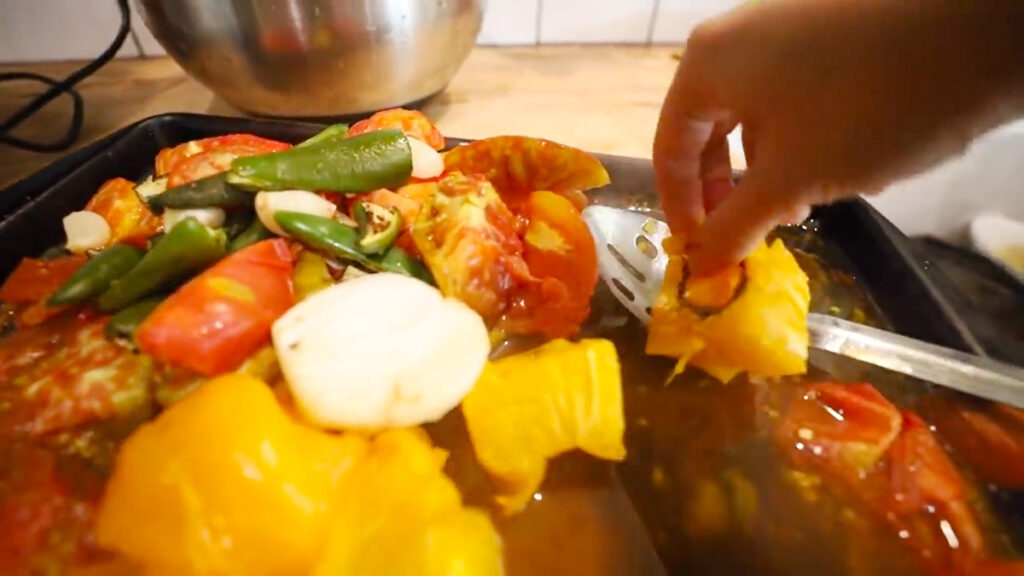
Can You Leave the Skins (Peels) on Tomatoes?
This is totally your call to make, but I prefer the easy option! It's actually very easy to pull the skins off after the tomatoes are roasted. However, there are nutrients in the skins, so the only time I pull them off is if they have ugly brown spots on them or if they fall off easily when transferring the roasted tomatoes to the food processor.
Should You Core Tomatoes Before Roasting?
I always take the core out of the tomatoes. It's hard, not tasty, and will not blend in well.
Should You Cook Tomatoes Before Making Salsa?
There are some salsa recipes that call for this, but the roasting step in this recipe replaces that. Roasting softens the fruit enough to allow for blending.
More Recipes You May Like
- Dutch Oven Roast Beef (Sweet Miah’s Signature Dish)
- An Incredibly Basic Farmhouse Quiche Recipe
- Homestead Dinners: Spatchcock Chicken
- Delicious Chocolate Cream Pie
- Homemade Mozzarella Cheese – Step-by-Step Tutorial (Goat's or Cow's Milk)
- How To Make Elderberry Syrup – (For Kids & Adults)
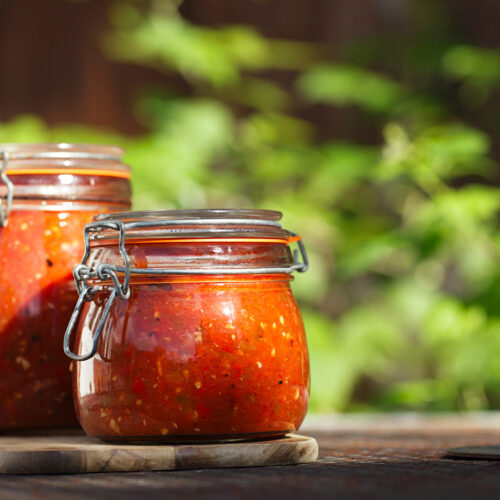
Roasted Tomato Salsa Recipe
Equipment
- 2 Large Flat Baking Sheets
- 1 Food Processor
- 1 Large Bowl
- 1 Slotted Spoon
Ingredients
- 6 Pounds Tomatoes
- 8-10 Whole Hot Peppers
- 1 Bulb Garlic 10-13 Cloves
- 2 Whole Onions
- 2 Bunches Cilantro
- 1/4 Cup Honey
- 2 Tablespoons Sea Salt
- 1 Whole Lemon to make 1/4 cup fresh squeezed juice
Instructions
- Begin by cutting core out of each tomato and cutting out any brown or ugly spots.
- Cut the tops off peppers and half them.
- Peel the garlic cloves and onions.
- Place all the above on a large flat pan (stoneware or metal) and roast in a 350°F preheated oven for approximately 45 minutes.
- Using a slotted spoon, place vegetables in the food processor in batches and pulse to desired consistency.
- Pour each batch of pulsed veggies into a large bowl as you go.
- After all of the vegetables have been processed, pour one cup back into the food processor, add cilantro, and pulse to desired consistency.
- Fold the cilantro mixture into the mixture in the large bowl.
- Mix in honey, salt, and lemon juice to your desired taste.

